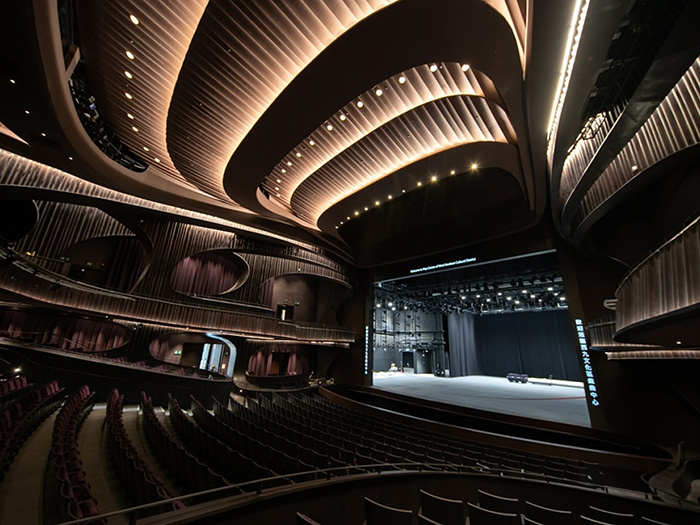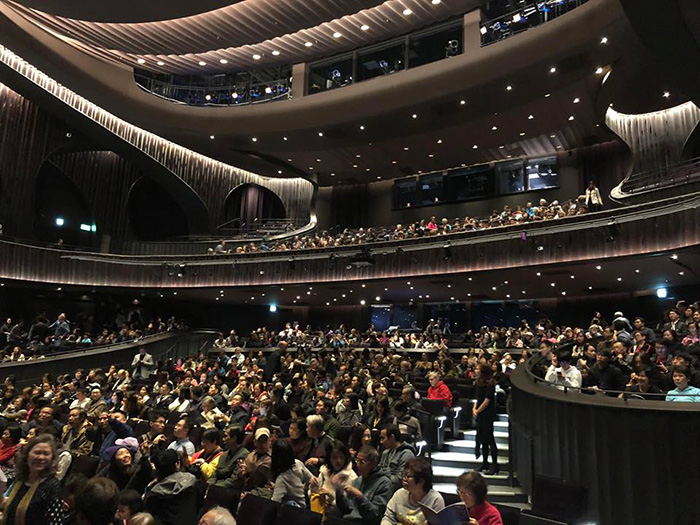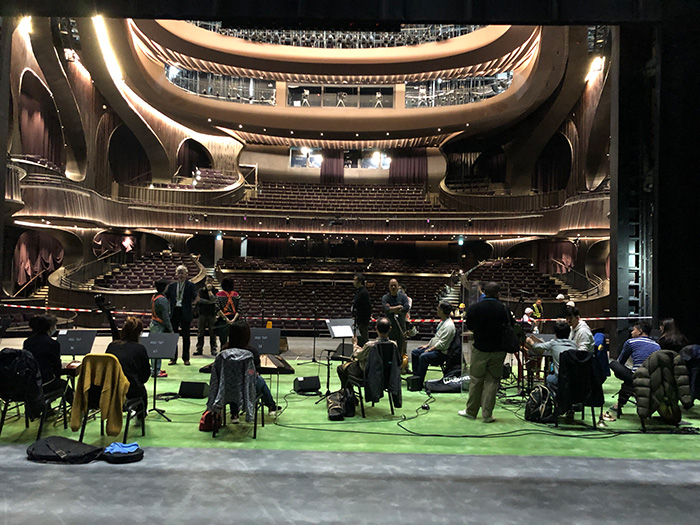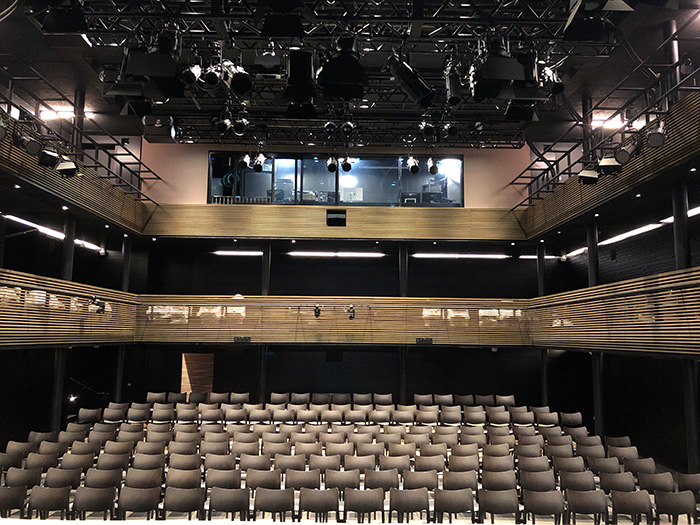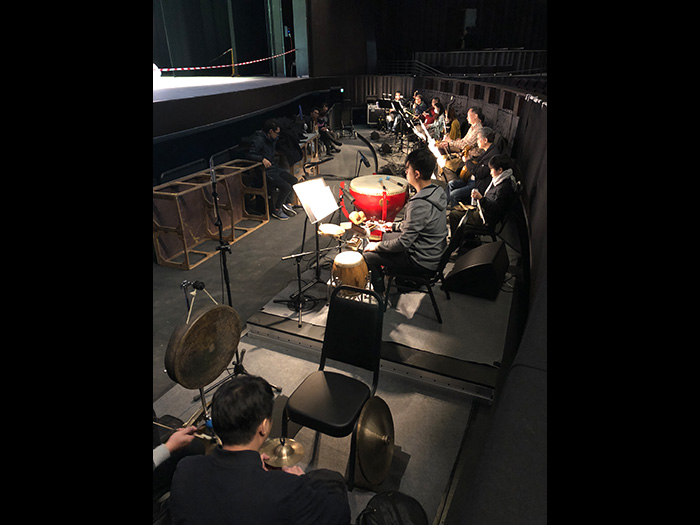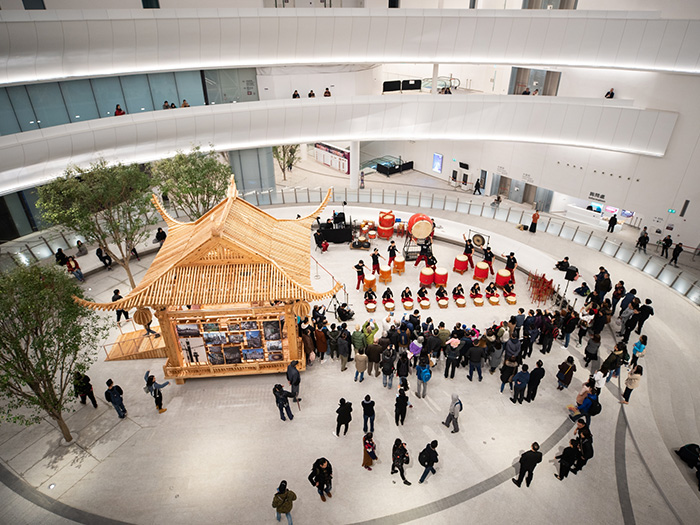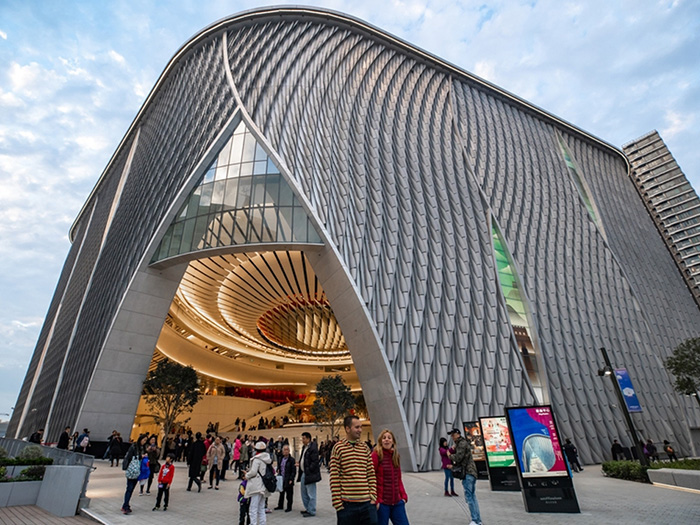This website uses cookies so that we can provide you with the best user experience possible. Cookie information is stored in your browser and performs functions such as recognising you when you return to our website and helping our team to understand which sections of the website you find most interesting and useful.
Xiqu Centre
The Xiqu Centre is the first completed building in the West Kowloon Cultural District (WKCD), the newest in one of the largest cultural quarters in the world. The Xiqu Centre is dedicated to the performance of Chinese Opera (Xiqu), and the Centre for preservation and development of the variety of Chinese Opera art forms.
SSV was responsible for the acoustics in all of the spaces in the Xiqu Centre which have been specifically designed for educating, preparing, rehearsing, and performing Chinese Opera – past present and future. Its 28,164 sq metres houses:
- the 1,073-seat Grand Theatre, a proscenium theatre for Chinese opera and other theatrical forms, ranging from fully amplified to natural performances;
- the 150-200-seat Tea House, a courtyard theatre for smaller-scale Xiqu amplified and unamplified performances;
- a well-equipped Seminar Hall, large and small rehearsal facilities, and a recording/broadcast suite; and, retail/food and beverage areas connected to the public ground-level Atrium.
In planning the acoustic design for the two theatres in particular, SSV has taken into account the heritage and expectations of Hong Kong audiences and practitioners, along with those of visiting artists from Mainland China, and international patrons and artists. Cantonese Opera performance integrates highly amplified sound, while some mainland traditions revolve around a more natural sound.
The overall aesthetic aim of Xiqu is beauty in all aspects of performance, and practitioners talk of roundness of movement, singing and instrumental tone. Effortlessness is important, and the right acoustic helps the performers feel the audience as an extension of their instruments and voices.
Chinese language is tonal, with vowel sounds as important as consonants to word meaning, aesthetic and emotional quality. In addition, Xiqu plot and emotion are carried substantially by the lyrics, and the text sometimes includes improvisation; the audience (or even the orchestra) may not know in advance precisely what will be sung or said, necessitating very good vocal intelligibility.
In the smaller Tea House, audiences enjoy Xiqu performances in an intimate setting with musicians either on stage or at audience level to the side of a thrust stage.
Over the last 50 years Cantonese Opera has become more amplified to adapt to the poor acoustics of existing venues and has survived by developing along with technology. SSV used this adaptability to integrate natural acoustics and audio design in order to achieve better balance between instruments and voices with lower loudness. Our acoustical design keeps the sound image focused precisely on the singers, which allows performers who prefer natural acoustics to work with the supportive, but clear, room acoustic.
As in all opera houses, the orchestra pit is at the nexus of the theatre, architecturally, theatrically, and acoustically. The size, shape and finishes of this pit, as well as the instrumentation and the skill of the players, are the tools we used to sculpt the sound quality emanating from it. Flexible acoustics elements tailor the loudness balance between the percussion, other instruments, and vocals. The pit is fitted with variable lifts to accommodate small Xiqu orchestras, as well as larger Chinese and Western orchestras.
To facilitate the improvisatory nature of the music, Xiqu orchestras need to be seated close to stage level so that the players – especially the erhu leader and the percussion leader – can communicate in ‘real time’ with the singers. Traditional off-stage orchestras have also been considered with audio support, baffles and curtains as appropriate.
The rounded acoustic character of the Grand Theatre is derived from the sinuous curves developed with the architects. The timber lining is comprised of boards milled with gaps and acoustic insulation in strategic areas to absorb or scatter sound, while surface characteristics are arranged to control orchestra loudness, maintain clarity, and project voices clearly. The hall reacts quickly to the performers’ nuanced projection, allowing the performers to collaborate precisely, and allowing the audience to follow the plot twists and turns in the sound.
The Tea House acoustics and audio design were integrated into the dimensions, geometry, and theatrical fittings. Textured finishes and highly flexible audio systems are included to help project and balance the sound in this space.
Sound Space Vision has prepared for this project for many years, visiting Hong Kong arts groups and theatres during and after our Directors’ work on Singapore’s acclaimed The Esplanade. Blending our extensive experience with Western opera houses and theatres with our interest and enthusiasm for Asian art forms, the Xiqu Centre has benefited from our careful attention to the intricacies of art forms and music, and the potential unlocked in a hall’s acoustics signature.
“Most crucial was a clarity in amplification that kept a first-rate pit band in delineated balance with the three generations of performers…” (The Financial Times)
The integration of audio systems and room acoustics for the Xiqu Centre has provided a space that allows a wide and continuous spectrum of “acoustical production”, from highly amplified to nearly natural, emphasising the visual beauty of the productions. This new Centre gives the Hong Kong fans and the many visitors a 21st century experience of traditional arts.
